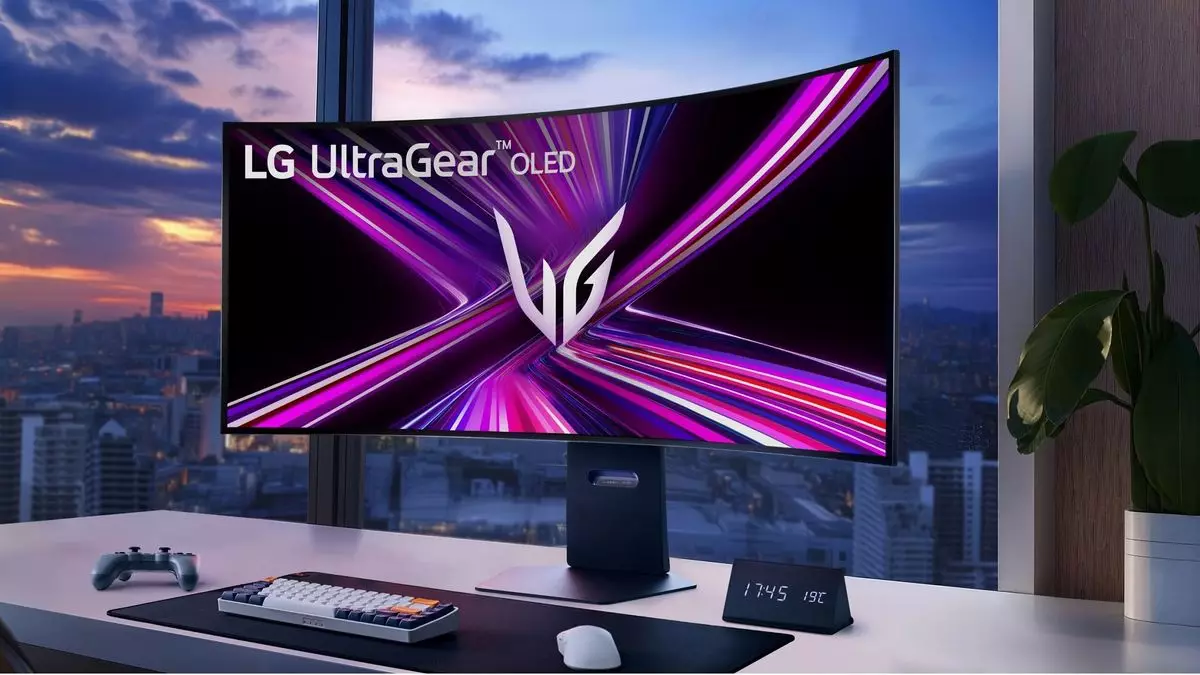In the rapidly evolving world of technology, few trends have the potential to shift market dynamics as significantly as the ascent of OLED monitors within the PC gaming community. According to LG, OLED panels now boast an impressive 22% share of the PC gaming monitor market, just two years after the launch of their first dedicated OLED monitor. This statistic is striking, especially when juxtaposed against the only 18% market share that OLED occupies within the television sector, despite LG’s introduction of their first OLED TV back in 2013.
The discrepancy between the rapid acceptance of OLED monitors for gaming and the comparatively slower uptake in the television market raises intriguing questions. The first OLED gaming monitor, the Alienware 34 AW3423DW, arrived nearly three years ago, based on Samsung’s Quantum Dot OLED technology, and paved the way for others. LG’s subsequent offerings helped broaden the choices available to consumers. The convergence of factors—superior color accuracy, deeper contrast ratios, and fundamentally enhanced visuals—has fueled this shift, establishing OLED as a compelling option for gamers seeking the ultimate in immersive experiences.
However, the high cost of these monitors remains a significant barrier to wider adoption. Entry-level models are positioned at around $600, and most premium ones are priced well above $800. Observing that the average OLED gaming monitor hovers around the $1,000 mark prompts skepticism; after all, the majority of gamers might still view these monitors as luxuries rather than essentials. Despite this, the growing enthusiasm for OLED clearly suggests that the gaming community is willing to invest in advanced technology, and this trend appears poised to continue.
The pricing paradox surrounding OLED monitors is particularly perplexing. At their launch, 27-inch 1440p OLED monitors were often as costly as 42-inch 4K OLED TVs, which simply did not seem justifiable. Fortunately, there has been a gradual decline in pricing, aligning more closely with consumer expectations. While one can now find a 27-inch OLED monitor starting around $600, other sizes tend to stretch into $800 and beyond.
In contrast, traditional LCD panels provide a much lower entry point for gamers. For instance, options like a 27-inch 1440p LCD monitor can be obtained for as little as $200, and larger ultrawide options often start at approximately $250. This stark contrast illuminates the challenge faced by manufacturers: how to make OLED a more accessible choice without compromising on quality or innovation.
To tip the scale further, there’s a growing hope that prices will stabilize or decrease in the near future. If OLED manufacturers could offer a 32-inch 4K model for around $500, and slightly lower for the 27-inch offerings, they might capture a larger share of the gaming market without the hesitance caused by high price points. Such pricing strategies would likely make OLED monitors significantly more appealing to the casual gamer who might otherwise lean towards more affordable alternatives.
Another aspect of OLED technology’s evolution lies in its brightness capabilities. Traditionally, OLED displays have faced challenges with peak brightness levels, often limiting their effectiveness in various lighting conditions. Recent announcements from Samsung and LG signal a possible turning point, hinting at new OLED technology that could achieve full-screen brightness levels of around 400 nits. Should this emerge as a reality, it would mark a significant step in resolving the brightness limitations historically associated with OLED panels.
If the anticipated releases meet expectations, one can foresee a new category of OLED monitors capable of delivering stunning visual fidelity without the drawbacks of prior generations. However, the concern remains regarding their pricing; even if these new models offer superior performance, they may also come with inflated costs. It’s critical for the industry to strike a balance between quality improvements and affordability if these monitors are to drive broader consumer adoption.
As OLED technology continues to evolve, we can expect to see a marked shift in consumer behavior in the gaming monitor market. The ideal trajectory would involve not only price reductions but also advancements in features like higher brightness levels and enhanced durability. As these factors align, cheaper models could become commonplace, allowing for average gamers to step into the world of OLED without facing financial strain.
With aspirations of a sub-$500 OLED monitor capable of meeting high performance expectations, the landscape of PC gaming could very well shift dramatically in just a few years. For now, the excitement surrounding OLED remains palpable, as technology enthusiasts and gamers alike await the next innovations that may soon redefine their gaming experiences. The transformation may be slow but is undoubtedly heading in the right direction, foreshadowing a promising future for OLED in the ever-competitive gaming sector.


Leave a Reply